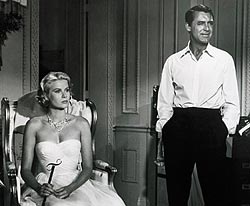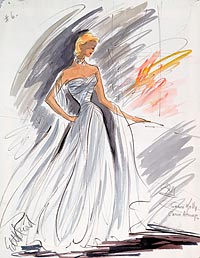Film and theater center digitizes three new collections
Some 2,000 miles separate Madison and Hollywood’s star-making machine, and it’s a 1,000-mile journey to New York’s Great White Way.

Although Ed Sullivan was uncomfortable with rock ‘n’ roll, in a savvy courtship of teenage viewers, he booked the Beatles, Elvis Presley and the Rolling Stones early in their careers. The first time the Beatles appeared on the show, viewership nearly doubled, reaching some 74 million households.
Photos courtesy: Wisconsin Center for Film and Theater Research
Yet Madison is home to more than 240 collections of film, theater, television and radio history and memorabilia — a treasure trove of cultural history held by the Wisconsin Center for Film and Theater Research (WCFTR) at the University of Wisconsin–Madison, in cooperation with the Wisconsin Historical Society.
And now, thanks to a special project, three new collections have been sifted, winnowed, digitized and posted to the WCFTR Web site, joining a collection from legendary Hollywood star and producer Kirk Douglas that the center digitized and launched as a pilot effort in fall 2007:
- acclaimed costume designer Edith Head,
- early radio pioneers in Madison, and
- nine slideshows taken from the center’s Stills and Flat Graphics Database, which will soon be searchable online.
All three offerings are supplemented with short essays and background information researched and written by UW–Madison film and media studies faculty and graduate students. Links to other key electronic resources and published information are also provided, adding extra context and understanding.
While browsing the exhibits, it’s impossible to not have an “Oh, wow” reaction.


Edith Head designed a white gown for Grace Kelly to wear in Alfred Hitchcock’s “To Catch a Thief” (1955). The photo from the film shows that the final version of the dress is nearly identical to her signed watercolor sketch.
“At first, we started scanning some of our documents and putting them up so people could really see these cool memos and letters and photos,” says Michele Hilmes, professor of media and cultural studies in UW–Madison’s Department of Communication Arts and director of the WCFTR. “We have wonderful letters from [John F. Kennedy] to William Evjue, publisher of the Capital Times and owner of WIBA, Madison’s first commercial radio station.”
Although the center’s full collection is impressive for its massive size — the United Artists materials alone fill a whopping 2,000 boxes — what sets the center apart is the work it does related to the collections.
“Scholars from all over the world come to Madison to explore the archives. Hundreds of books have been written based on research done at the center,” says Hilmes.
But there’s something for nonexperts, too. “If you’ve ever tried to go online and find out what’s in an archive, it can be very confusing,” Hilmes continues. “Archives just provide access to materials, but it takes a lot of research experience to navigate the finding aids and figure out what you’re looking at. Here we have a department of communication arts with all these scholars who know a lot about the history of media. We decided we could create scholarly exhibits for the Web that would provide context and background, along with critical analysis that would situate the material and tell people more about it.”
Those who delve into the three new online collections can take a fascinating journey.

Head was nominated for 35 Academy Awards for costume design; she took home the Oscar eight times.
Head worked on more than 1,000 films during her 44 years as head designer at Paramount and 14 years at Universal, receiving 35 Academy Award nominations along the way. The online collection features some of her personal papers, but is largely watercolor, pencil, and pen-and-ink sketches by Head and her teams of designers. It reveals the thought process and the business behind designing film costumes — along with some unexpected postings, such as actor Richard Burton’s measurements (chest 42 inches, trouser inseam 31 inches).
The university was a leader in creating educational broadcasting content for the developing new medium of radio. The new WCFTR exhibit “Radio Pioneers in Madison, WI” draws from the Wisconsin Historical Society archives and shows the growth of the medium and the philosophy of using radio to educate. The collection includes, in the chapter “WIBA: Madison’s First Commercial Radio Station,” photos and extensive documents, including letters and notes to Evjue from Kennedy, Robert La Follette and President Harry Truman.
The title of the third new collection, “Photos and Flat Graphics Slide Shows,” gives little hint of the bounty within. The nine slideshows — ranging from TV’s iconic
“The Ed Sullivan Show” to theater’s “Design for Living” — are drawn from the center’s extensive publicity and personal photographs, movie stills, posters, playbills, clippings and scrapbooks. Some take viewers behind the camera to see what goes into making a classic film; others reveal how studios shaped actors to become stars and bankable box office draws.
The Douglas and three new digital collections were made possible through contributions from UW–Madison alumnus Stephen P. Jarchow. His support funded four graduate students as summer fellows to develop the featured collections for the Web.
So what comes next? “Eventually we’ll create an online catalog of photos and visual materials in all the collections,” Hilmes says. “But besides paper, we have film collections and video collections … thousands of audio recordings … [and] a wonderful set of collections around the Hollywood blacklist. … Don’t get me started, I could go on and on.”
